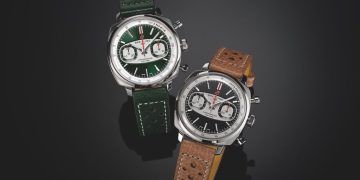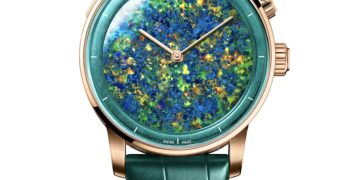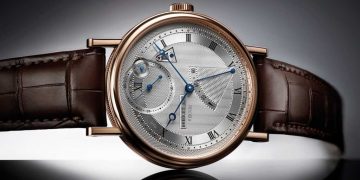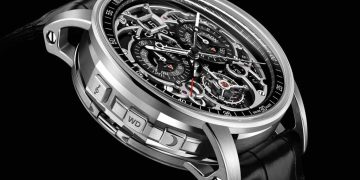Credits: Article and images by Elizabeth Doerr @ Quill & Pad. See the original article here - https://quillandpad.com/2024/11/08/the-ongoing-saga-of-the-worlds-most-complicated-wristwatch-superbia-humanitatis-by-louis-elysee-piguet-franck-muller-and-paul-gerber-plus-video/
—————————————————————————————————–
End of the story?
When asked whether another complication might be added to the Piguet/Muller/Gerber Grand Complication, Gerber replied in his mild-mannered way, “Not at this time!”
The story continues
Ralph Graf from Switzerland bought the Piguet/Muller/Gerber Grand Complication from Lord Arran and thought two areas might be improved: the level of aesthetic finishing should be brought up to a consistently high level and the timepiece was lacking a real, appropriate name.
So Gerber disassembled the watch once more down to the last of its 1,116 parts to take stock of the appearance and finish of each individual component, discussing with Graf which part would be modified and to what degree of finish.
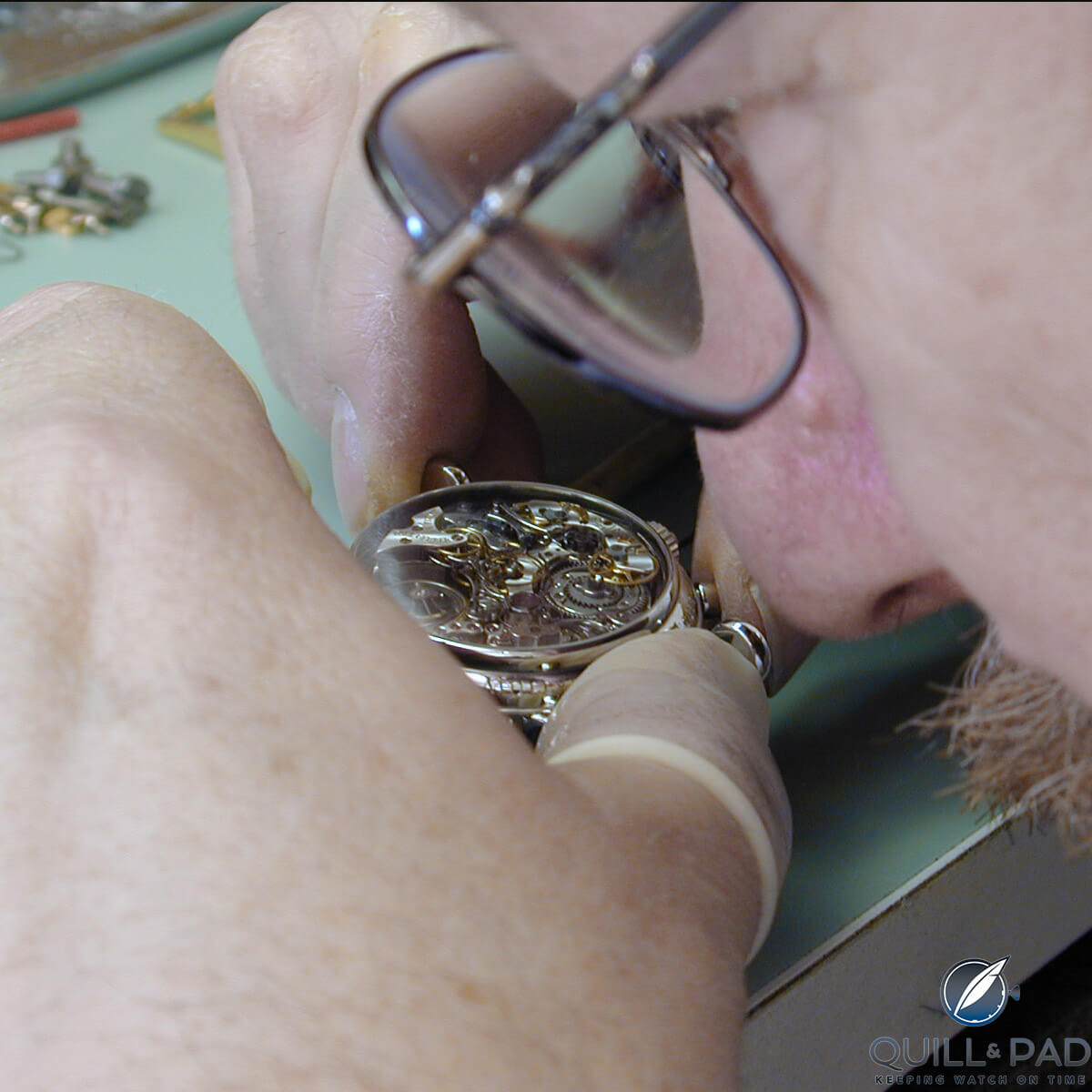
Paul Gerber inspecting the ultra-complicated movement of the Superbia Huminatitas (photo courtesy Dr. Magnus Bosse)
The overall goal was to achieve a homogeneous, subtle movement aesthetic appropriate for this outstanding technical timepiece, yet an aesthetic that would not overshadow or distract from the mechanics.
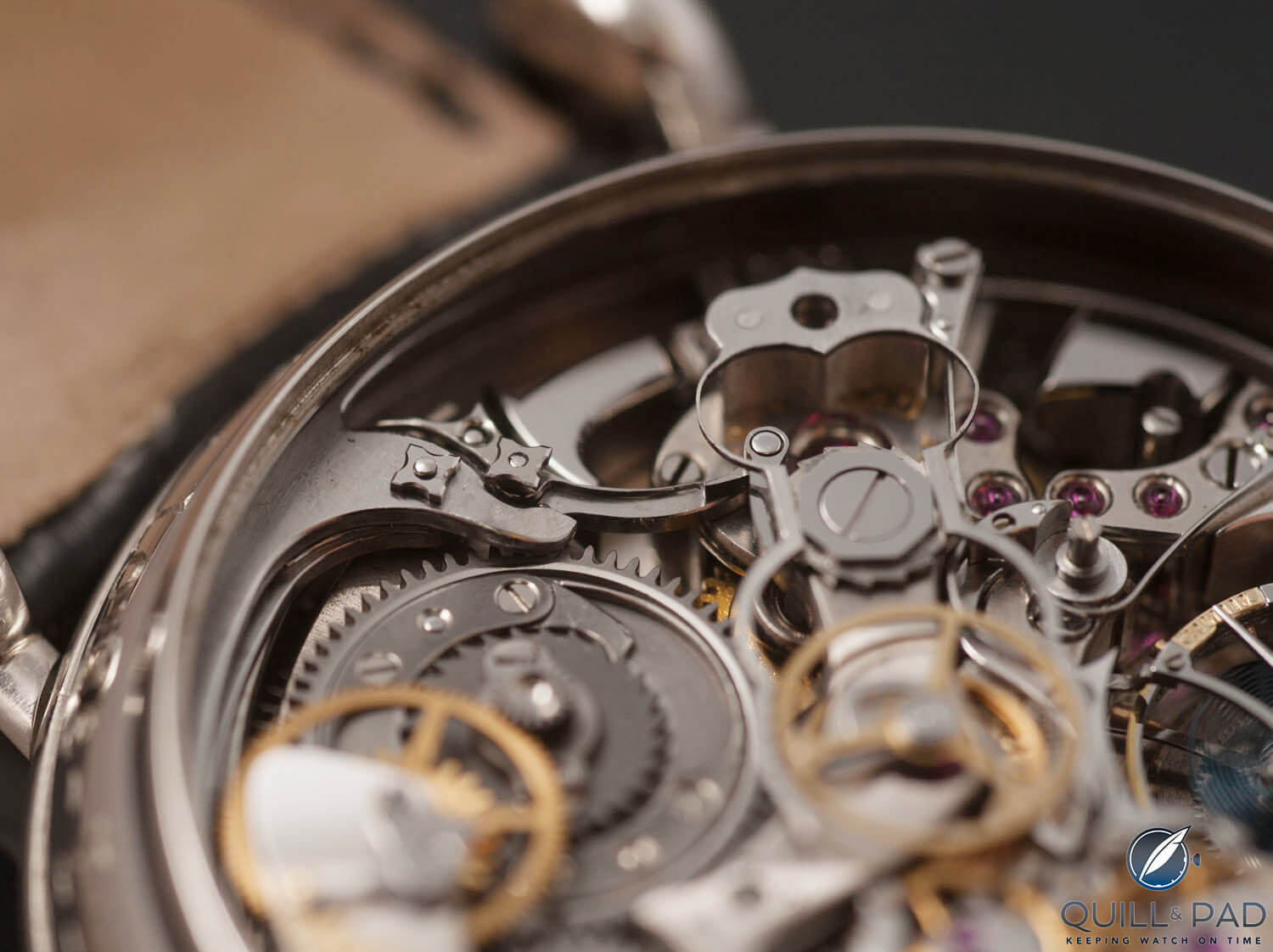
The two screws to the left, for example, were newly made by Gerber to increase visual appeal of the Superbia Huminatitis’ movement (photo courtesy Dr. Magnus Bosse)
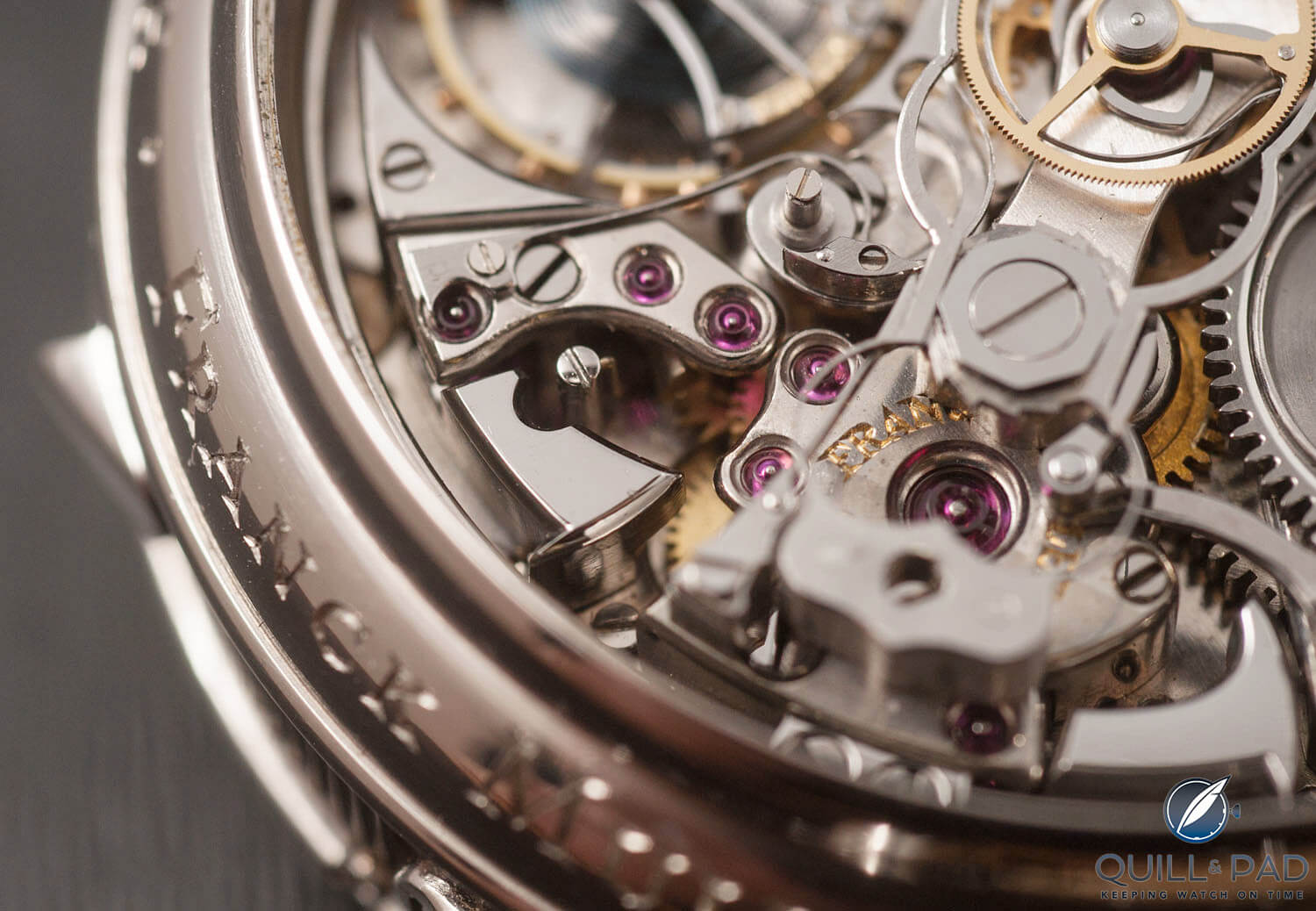
Centuries of watchmaking progress harmoniously united in one single piece (photo courtesy Dr. Magnus Bosse)
While the main task involved was to polish screws evenly and create consistent anglage, Gerber seized this opportunity to correct past missteps, such as the moon phase indication, which turned into the wrong direction.
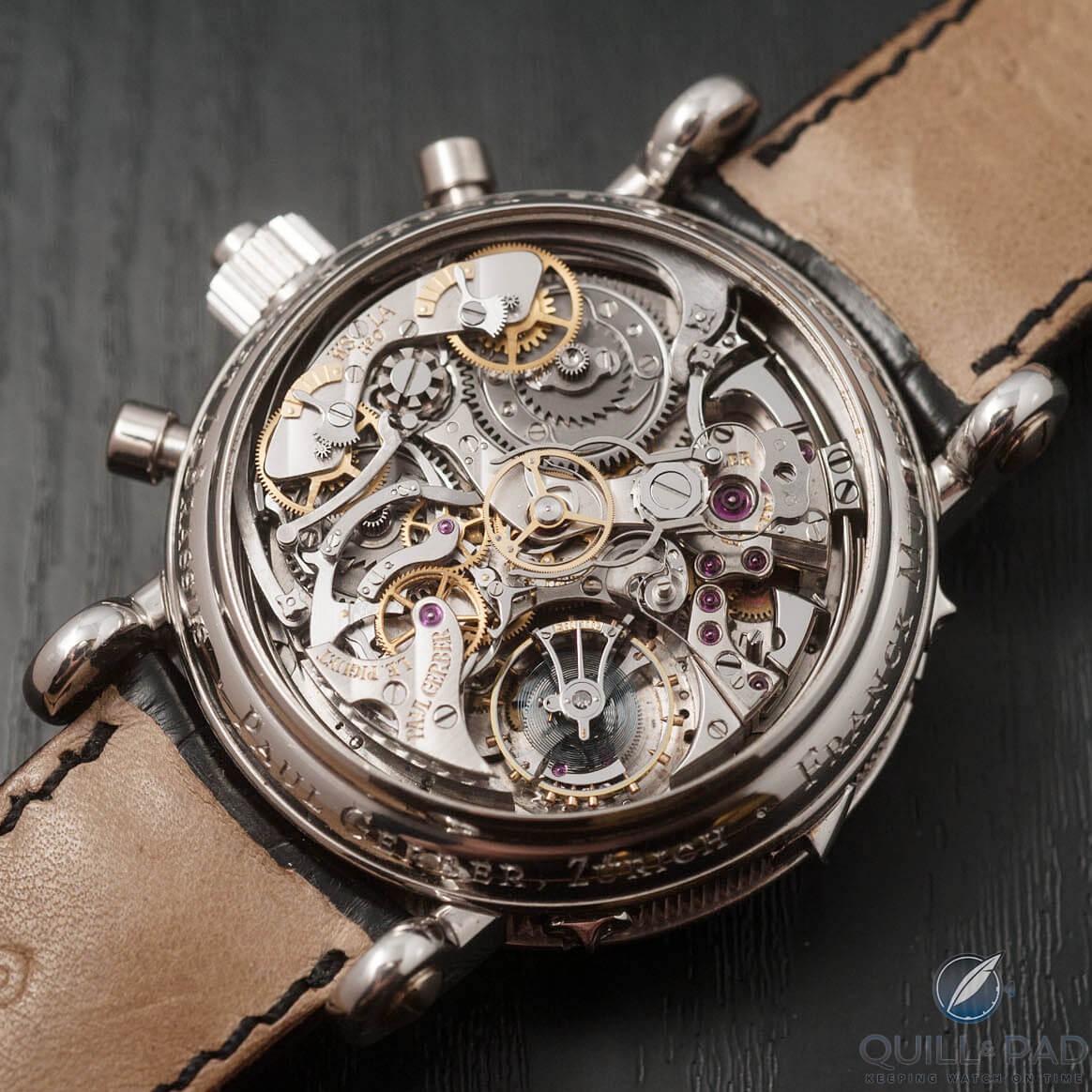
A masterpiece is completed: movement view of the Superbia Humanitatis (photo courtesy Dr. Magnus Bosse)
When contemplating a suitable name for this masterpiece, several criteria were set: the name should be catchy, it should appeal to a global audience, and it should convey the message of this watch.
In the end, the Latin name Superbia Humanitatis (“the pride of mankind”) was chosen.
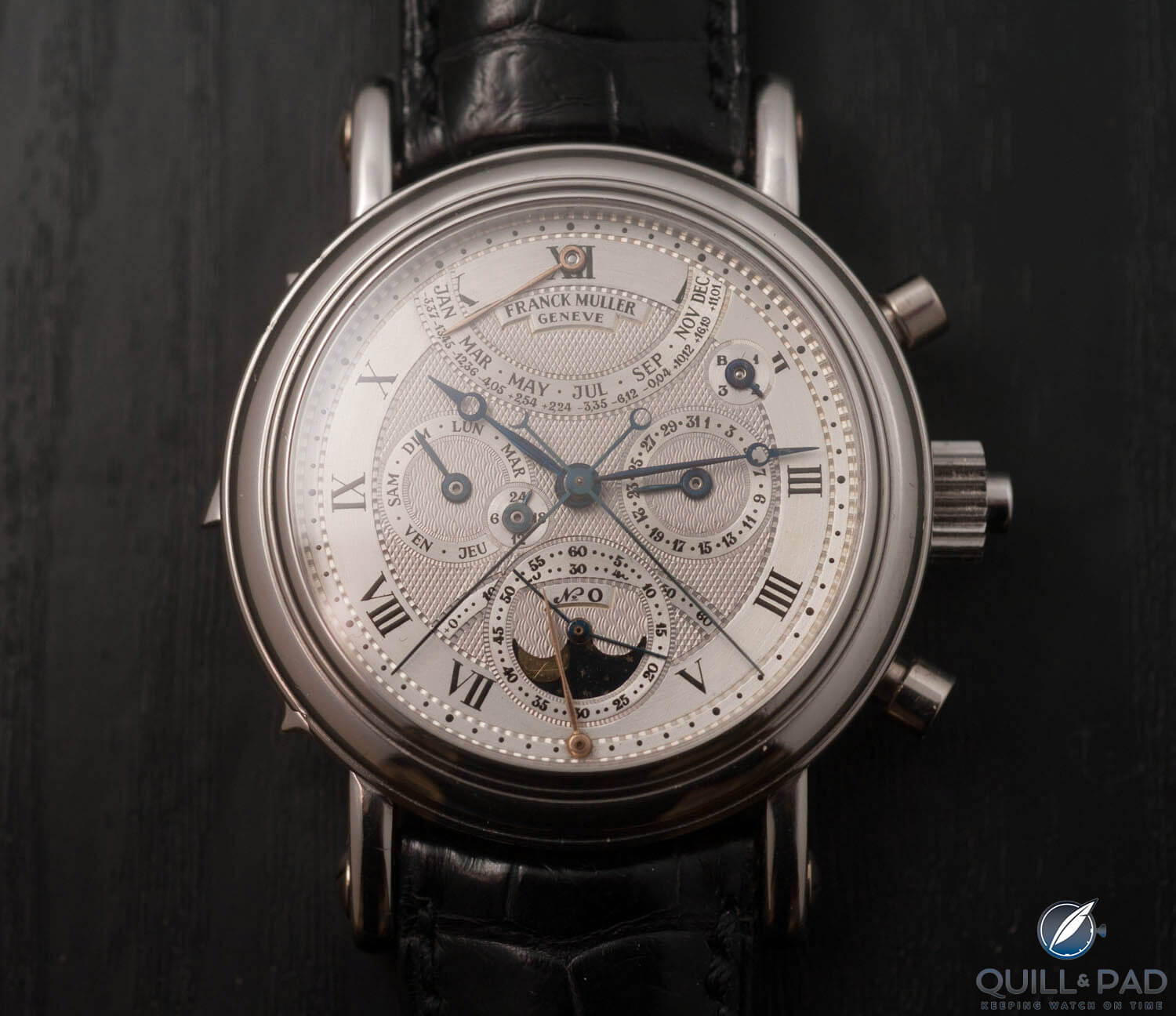
Superbia Humanitatis: the “pride of mankind”
Superbia Humanitatis captures the objective of the watch completely: while overtly confident, it’s confident with reason: Graf considers this watch not only as an end in itself but as a stimulus for young watchmakers to take up challenges and create their own extraordinary timepieces.
Quick Facts Superbia Humanitatis (formerly known as Caliber 92, the Piguet/Muller/Gerber Grand Complication, and the Lord Arran)
Case: custom-made platinum case by Grandjean Sarl, 39 x 18.63 mm (original Franck Muller case 39 x 14.7 mm)
Dial: hand-guilloche
Movement: Louis-Elysée Piguet caliber from 1892, diameter 32 mm (including gong springs) and 28.3 mm (without gong springs); height 8 mm (original Piguet movement) and 13.4 mm (after final modifications); 18.000 vph/2.5 Hz frequency; twin spring barrels; base movement 491 components; after modifications by Franck Muller: 651; after final modifications by Paul Gerber: 1,116 components (including case)
Functions: hours, minutes, subsidiary seconds; minute repeater with silence function and large & small sonnerie; added to by Franck Muller: perpetual calendar with moon phase, equation of time indication, 24-hour hand, thermometer displayed by a retrograde hand; added to by Paul Gerber: one-minute flying tourbillon with diamond endstone, flyback split-seconds chronograph with jump-minute counter, power reserve indications for going and chiming trains
Dr. Magnus Bosse is a former moderator at the watch collector community PuristSPro.com and co-founder at MING Watches.
* This article was first published on April 17, 2018
You might also enjoy:
Paul Gerber: Renaissance Man And Creator Of World’s Most Complicated Watch And Smallest Wooden Clock
The Watch That Changed My Life: The Jean Daniel Nicolas Two-Minute Tourbillon By Daniel Roth
Credits: Article and images by Elizabeth Doerr @ Quill & Pad. See the original article here - https://quillandpad.com/2024/11/08/the-ongoing-saga-of-the-worlds-most-complicated-wristwatch-superbia-humanitatis-by-louis-elysee-piguet-franck-muller-and-paul-gerber-plus-video/



